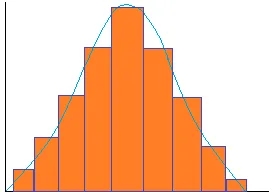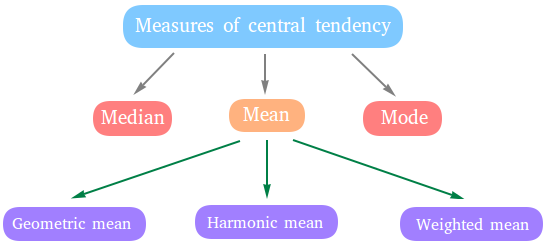Measures of central tendency
The measures of central tendency are the mean, median and mode of a set of data. Although looking at graphs such as bar charts or histograms is very useful to analyze data, it is not enough in many cases in order to draw meaningful conclusions.
We also need measures of central tendency, measures of variation, and measures of position.
A measure of center is the value in the middle of a data set. This value in the middle is also called average. To find the average, you can look for the mean, the median, the mode, or the midrange.
 Measures of central tendency
Measures of central tendencyThe measure of variation refers to how close the values are to each other. The standard deviation and Chebyshev’s theorem are used a lot to find measures of variation.
The measure of position determines the position of a single value in relation to other values in the data set. Some measures of position are quartiles, deciles, percentiles, percentile rank, and z scores.

Mean: The mean is the sum of the values in the set divided by the number of items in the set. There is basically no difference between the mean, the arithmetic mean, and the average. In statistics, the term 'mean' is used instead of 'average'
For example, what is the mean for 2, 4, and 6?
(2 + 4 + 6)/3 = 12/3
(2 + 4 + 6)/3 = 4
Mode: The mode of a set of data is the value or values that occur more often.
For example, the mode of 6, 5, 2, 3, 5, 1, 8 is 5 because 5 appears more often than the other values.
Median: The median of an ordered set of data is the value in the middle.
For example, the median of 4, 6, 8, 10, 12 is 8 since 8 is the value in the middle.